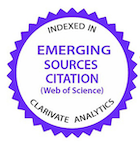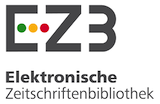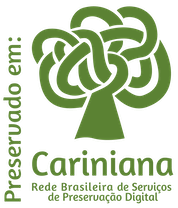Digestibilidade e efeitos hematológicos da aflatoxina B1 em equinos
DOI:
https://doi.org/10.5216/1809-6891v22e-63385Resumo
Objetivou-se com essa pesquisa verificar o efeito das micotoxinas na digestão dos nutrientes e no perfil hematológico de equinos. Foram utilizados 12 equinos em delineamento experimental inteiramente casualizado, com três tratamentos e quatro repetições. Foram adicionadas 50 ou 100 µg kg-1 de AFB1, conforme o tratamento preconizado a uma dieta base contendo micotoxinas. O tratamento controle não conteve AFB1. O ensaio teve duração de 40 dias, sendo 12 dias de adaptação e 28 dias experimentação. Uma vez por semana foram coletadas amostras de sangue para avaliação hematológica e bioquímica. Ao final da fase experimental, foi realizado um ensaio de digestão, pelo método de coleta parcial de fezes, utilizando-se o LIPE® como indicador. Verificou-se que a presença de aflatoxina na dieta influenciou as taxas de glóbulos brancos, especialmente os granulócitos, a atividade sérica da Creatina Quinase e da Fosfatase Alcalina (P<0.05), que apresentou maiores valores nos tratamentos com 50 e 100 µg kg-1 de AFB1. Não se verificou ação das micotoxinas, nos níveis empregados na digestibilidade dos nutrientes das dietas (P>0.05).
Downloads
Referências
Buszewska-Forajta, M. Mycotoxins, invisible danger of feedstuff with toxic effect on animals. Toxicon (Oxford), 2020;182:34–53.
Fink-Gremmels, J.; Spronk L. Hygienic quality of feed: implications of feed contamination with moulds and mycotoxins on equine health and performance. In: European Equine Health and Nutrition Congress. Belgium: European Equine Health and Nutrition Congress.; 2013. p. 63–7.
Keller, K.M.; Queiroz, B.D.; Keller, L.A.M.; Ribeiro, J.M.M.; Cavaglieri, L.R.; González-Pereyra, M.L.; Dalcero, A, M.; Rosa, C.A.R. The mycobiota and toxicity of equines feeds. Vet Res Commun. 2007;(31):1037–45.
Anvisa/MS. Resolução de Diretoria Colegiada – RDC No 07, de 18 de fevereiro de 2011. Ministério da Saúde - MS Agência Nac Vigilância Sanitária - ANVISA. 2011;2011:8.
Ministério da Agricultura Pecuária e Abastecimento (MAPA). Portaria MAPA/SNAD/SFA no 7, de 09 de novembro de 1988. Diário Of da União. 1988;09 nov.(Seção 1):21.968.
National Research Council - NRC. Nutrient requirements of horses. Washington, D.C: National Academies Press, 6a ed Rev; 2007. p. 341.
Shotwell, O.L.; Hesseltine, C.V.; Stubblefield, R.D.; Sorenson, W.G. Production of aflatoxin on rice. Appl Microbiol. 1966;(14):425–9.
Trucksess, M.W.; Stack, M.E.; Nesheim, S.; Albert, R.; Romer, T. Multifunctional column coupled with liquid chromatography for determination of aflatoxins B1, B2, G1 and G2 in corn, almonds. Brazil nuts, peanuts, and pistachio nuts: Collaborative study. J AOAC Int. 1994;77:1512–21.
Silva, D.J.; Queiroz A. Análise de alimentos: métodos químicos e biológicos. 3a. Universidade Federal de Viçosa, editor. UFV-Viçosa-MG; 2002. 235 p.
Van Soest, P.J.; Robertson, J.B.; Lewis B. Development of a comprrehensive sytem of feed analyses and its application to forages. J Anim Sci. 1991;74:3583–97.
Sistema de análises estatísticas e genéticas - SAEG. Viçosa -MG: Universidade Federal de Viçosa; 2007. p. 301.
Hodgson, D. R.; McKeever, K. H. and McGowan CM. The athletic horse: principles and practice of equine sports medicine. In: Hodgson, D.R.; Rose RJ, editor. Hematology and Biochemistry. 2nd ed. Philadelpia: Elsevier Saunders; 2014. p. 63–79.
Carlson, G.P. Coleta de amostras e interpretação dos exames laboratoriais. In: Smith B., editor. Tratado de medicina interna de grandes animais. São Paulo: Manole; 1993. p. 395–424.
Robinson, N. E.; Sprayberry, K.A. Current Therapy in Equine Medicine. 6a. St Louis (USA): Saunders; 2009.
Gonzalez, F. H. D.; Silva SC. Introdução a Bioquímica Clínica Veterinária. 2a. Porto Alegre - RS: UFRGS; 2006. 364 p, il.
Kerr, M.G. Veterinary Laboratory Medicine: Clinical Biochemistry and Haematology. 2a. Oxford- England: Blackwell Science; 2002. 392 p.
Padilha, F.G.F.; Dimache, L.A.G.; Almeida, F.Q.; Ferreira, A.M.R. Blood biochemical parameters of Brazilian sport horses under training in tropical climate. R Bras Zootec. 2017;46(8):678–82.
Khol-Parisini, A.; Hellweg, P.; Razzazi-Fazeli, E.; Saalmüller, A.; Strasser, A.; Tichy, A.; Zentek, J. Highly deoxynivalenol contaminated oats and immune function in horses. Arch Anim Nutr. 2012;66(2):149–61.
Schulz, A.K.; Kersten, S.; Dänicke, S.; Coenen, M.; Vervuert, I. Effects of deoxynivalenol in naturally contaminated wheat on feed intake and health status of horses. Mycotoxin Res. 2015;31(4):209–16.
Bryden, W.L. Mycotoxin contamination of the feed supply chain: Implications for animal productivity and feed security. Anim Feed Sci Technol. 2012;173:134–58. Available from: http://dx.doi.org/10.1016/j.anifeedsci.2011.12.014
Pierron, A.; Alassane-Kpembi, I.; Oswald, I.P. Impact of mycotoxin on immune response and consequences for pig health. Anim Nutr. 2016;2:63–8.
Placinta, C.M.; D’mello, C.P.F.; Macdonald AM. A review of worldwide contamination of cereal grains and animal feed with Fusarium mycotoxins. Anim Feed Sci Technol. 1999;78:21–37.
Peng, Z.; Chen, L.; Nüssler, A.K.; Liu, L.; Yang, W. Current sights for mechanisms of deoxynivalenol‐induced hepatotoxicity and prospective views for future scientific research: A mini review. J Appl Toxicol. 2016; Available from: https://doi.org/10.1002/jat.3428
Caloni, F.; Cortinovis, C. Toxicological effects of aflatoxins in horses. Vet J. 2011;188:270–3. Available from: http://dx.doi.org/10.1016/j.tvjl.2010.06.002
Cortinovis, C.; Battini, M.; Caloni, F. Deoxynivalenol and T-2 Toxin in Raw Feeds for Horses. J Equine Vet Sci. 2012;32:72–4. Available from: http://dx.doi.org/10.1016/j.jevs.2011.08.002
Riet-Correa, F.; Rivero, R.; Odriozola, E.; Adrien, M.L.; Medeiros, R.M.T.; Schild, A.L. Mycotoxicoses of ruminants and horses. J Vet Diagnostic Investig. 2013;25:692–708.
Maziero, M.T.; Bersot, L.S. Micotoxinas em alimentos produzidos no Brasil. Rev Bras Prod Agroindustriais. 2015;12(1):89–99.
Fazio, F.; Assenza, A.; Tosto, F.; Casella, S.; Piccione, G.; Caola, G. Training and haematochemical profile in Thoroughbreds and Standardbreds: A longitudinal study. Livest Sci. 2011;141:221–6. Available from: http://dx.doi.org/10.1016/j.livsci.2011.06.005
Ramasamy, S.; Wang, E.; Hennig, B.; Merrill, A.H. Fumonisin B1alters sphingolipid metabolism and disrupts the barrier function of endothelial cells in culture. Toxicology and Applied Pharmacology. 1995;133:343–8.
Abdul, N.S.; Marnewick, J.L. Fumonisin B1‐induced mitochondrial toxicity and hepatoprotective potential of rooibos: An update. J Appl Toxicol. 2020; Available from: https://doi.org/10.1002/jat.4036
Sloet van Oldruitenborgh-Oosterbaan, M.M. Appropriate blood variables helpful in diagnosing (sub)clinical disease in the horse. In: Lindner A, editor. Conference on Equine Sports Medicine and Science. Cordoba, Spain: Wageningen Academic Publishers; 1998. p. 14–33.
Zaher, D.M.; Mohammed, I.G.; Omar, H.A.; Aljareh, S.N.; Al‐Shamma, S.A.; Ali, A.J.; Zaib, Z.; Iqba, J. Recent advances with alkaline phosphatase isoenzymes and their inhibitors. Arch Pharm. 2020;353. Available from: https://doi.org/10.1002/ardp.202000011
Voss, K.A.; Smith, G.W.; Haschek, W.M.; Fumonisins: Toxicokinetics, mechanism of action and toxicity. Anim Feed Sci Technol. 2007;137:299–325.
Kamle, M.; Mahato, D. K.; Devi, S.; Lee, K. E.; Kang, S.G.; Kumar.P. Human Health and their Management Strategies. Toxins (Basel). 2019;1–23.
Trueman, K.F.; Lumsden, J.H.; Mcsherry, B.J. Examination of the origin of increased equine serum alkaline phosphatase concentrations. Can Vet J.1983;24:108–11.
Downloads
Publicado
Como Citar
Edição
Seção
Licença
Copyright (c) 2021 Ciência Animal Brasileira

Este trabalho está licenciado sob uma licença Creative Commons Attribution 4.0 International License.
Autores que publicam nesta revista concordam com os seguintes termos:
- Autores mantém os direitos autorais e concedem à revista o direito de primeira publicação, com o trabalho simultaneamente licenciado sob a Licença Creative Commons Attribution que permite o compartilhamento do trabalho com reconhecimento da autoria e publicação inicial nesta revista.
- Autores têm autorização para assumir contratos adicionais separadamente, para distribuição não-exclusiva da versão do trabalho publicada nesta revista (ex.: publicar em repositório institucional ou como capítulo de livro), com reconhecimento de autoria e publicação inicial nesta revista.
- Autores têm permissão e são estimulados a publicar e distribuir seu trabalho online (ex.: em repositórios institucionais ou na sua página pessoal) a qualquer ponto antes ou durante o processo editorial, já que isso pode gerar alterações produtivas, bem como aumentar o impacto e a citação do trabalho publicado (Veja O Efeito do Acesso Livre).






























